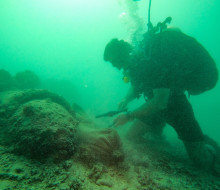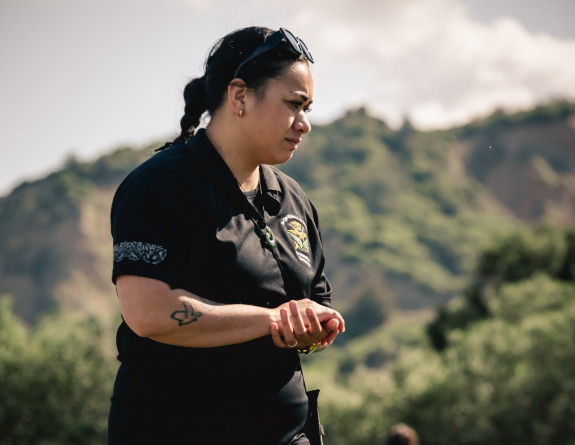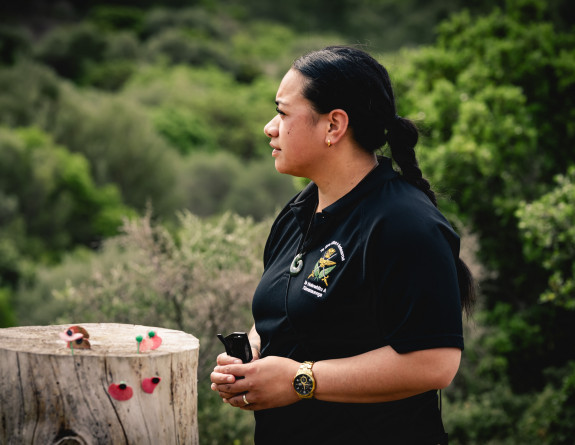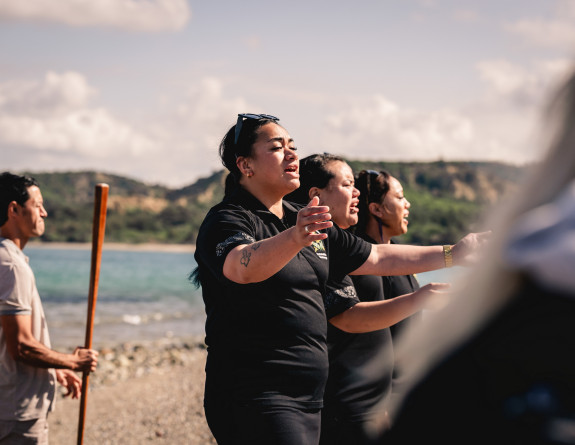
Second World War-era bombs in Vanuatu made safe by Navy divers
26 June 2024
Unfortunately you are viewing this website on an outdated browser which does not support the necessary features for us to provide an adequate experience. Please switch to a modern browser such as latest version of Google Chrome, Mozilla Firefox, Apple Safari or Microsoft Edge.
Ngā mihi nui
Vini Watkins, who formerly hails from Christchurch, says her long service with the New Zealand Army underpins the special bond she feels with the Gallipoli Peninsula in Türkiye.
She’s there as part of the New Zealand Defence Force (NZDF) contingent to commemorate the ill-fated campaign of 1915.
Ms Watkins served 13 years in the New Zealand Army (2009 to 2022), and now works for Army General Staff in Wellington as a civilian. She is a Samoan member of the NZDF Māori Cultural Group (MCG), which will play a major part at the ceremonies on the Turkish peninsula.
“I was unfortunate to never deploy with the Army, but I have been involved with the Māori kapa haka for some time,” she said. Her connection with the MCG dated back to 2016.
“When I joined I naturally went to the Māori groups and found some brothers and sisters there.
“The values, the morals, the tikanga is very similar,” she said.
“I’m not Māori, there’s not one ounce of Māori in me, but I love it. In fact they encourage me to be myself and also to share my language and practise some of the things I do.
“It’s a very safe place for me.”
Ms Watkins is the first member of her family to serve in the New Zealand military, and while she doesn’t have a family connection with Gallipoli, she will lay poppies on behalf of friends and family.
“The whole nation suffered, whether directly or indirectly. It’s just our core, especially the military.
“Anzac Day is the one special day you commemorate.”



Christchurch’s Vini Watkins is the first member of her family in the New Zealand military and also the first to visit Gallipoli for Anzac Day
Most of the 40-strong NZDF contingent arrived in Türkiye about a week before the 25 April anniversary, to acclimatise and rehearse before the ceremonies.
Battlefield tours were part of the programme so the members could learn more about those who were involved in the grim battles of 1915, drawing in perspectives from both sides of no-man’s-land.
Ms Watkins felt a strong connection to the verdant sweep of land in what is modern-day Türkiye, noting that it had once been a place of so much pain and suffering.
“It’s surreal. It’s breathtaking how beautiful the place is but a tragedy when you think about what people went through.”
The contingent visited the site of the Maori Pah which was rededicated last year, and was where the 477-strong Māori contingent of the New Zealand Expeditionary Force was mostly based.
The MCG decided to sing an uplifting song at the site, which is nestled into a tangle of clay foothills below the former firing line, just north of Anzac Cove.
“I felt just a huge weight of sadness and grief at the pah,” Ms Watkins said.
“But it was balanced singing the waiata. It made me think of uncles and how they were bringing their morale up through waiata.”
She was also able to share with the contingent the story of 18-year-old Samoan Bernard Stanley Gurr, who enlisted in 1914 despite being too young to do so. He served at Gallipoli and was shot in the shoulder at Chunuk Bair.
“He would be troubled by the war wound for the rest of his life, and would eventually return to live in American Samoa with his Kiwi bride.”